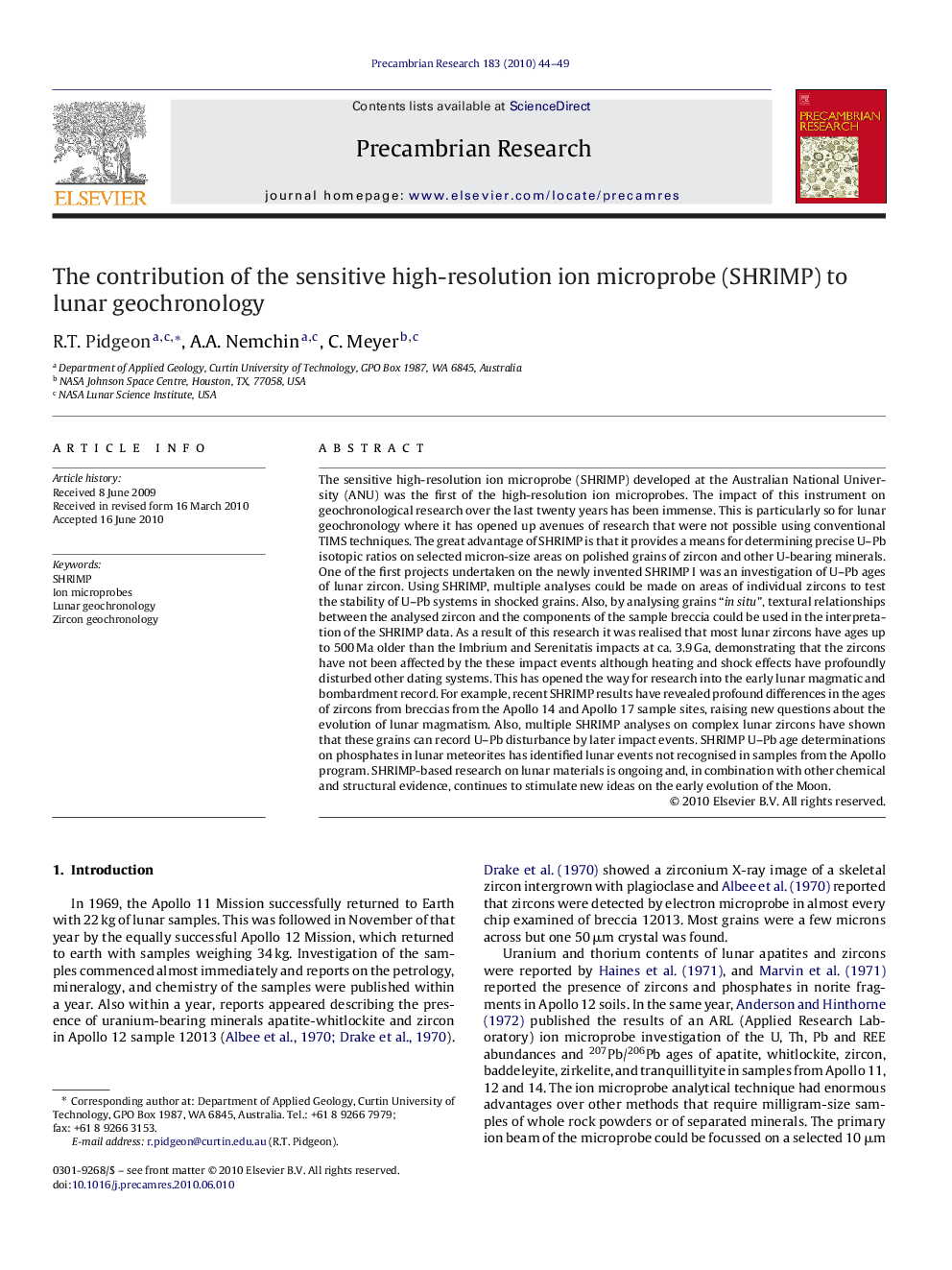| کد مقاله | کد نشریه | سال انتشار | مقاله انگلیسی | نسخه تمام متن |
|---|---|---|---|---|
| 4723979 | 1355562 | 2010 | 6 صفحه PDF | دانلود رایگان |

The sensitive high-resolution ion microprobe (SHRIMP) developed at the Australian National University (ANU) was the first of the high-resolution ion microprobes. The impact of this instrument on geochronological research over the last twenty years has been immense. This is particularly so for lunar geochronology where it has opened up avenues of research that were not possible using conventional TIMS techniques. The great advantage of SHRIMP is that it provides a means for determining precise U–Pb isotopic ratios on selected micron-size areas on polished grains of zircon and other U-bearing minerals. One of the first projects undertaken on the newly invented SHRIMP I was an investigation of U–Pb ages of lunar zircon. Using SHRIMP, multiple analyses could be made on areas of individual zircons to test the stability of U–Pb systems in shocked grains. Also, by analysing grains “in situ”, textural relationships between the analysed zircon and the components of the sample breccia could be used in the interpretation of the SHRIMP data. As a result of this research it was realised that most lunar zircons have ages up to 500 Ma older than the Imbrium and Serenitatis impacts at ca. 3.9 Ga, demonstrating that the zircons have not been affected by the these impact events although heating and shock effects have profoundly disturbed other dating systems. This has opened the way for research into the early lunar magmatic and bombardment record. For example, recent SHRIMP results have revealed profound differences in the ages of zircons from breccias from the Apollo 14 and Apollo 17 sample sites, raising new questions about the evolution of lunar magmatism. Also, multiple SHRIMP analyses on complex lunar zircons have shown that these grains can record U–Pb disturbance by later impact events. SHRIMP U–Pb age determinations on phosphates in lunar meteorites has identified lunar events not recognised in samples from the Apollo program. SHRIMP-based research on lunar materials is ongoing and, in combination with other chemical and structural evidence, continues to stimulate new ideas on the early evolution of the Moon.
Journal: Precambrian Research - Volume 183, Issue 1, 1 November 2010, Pages 44–49